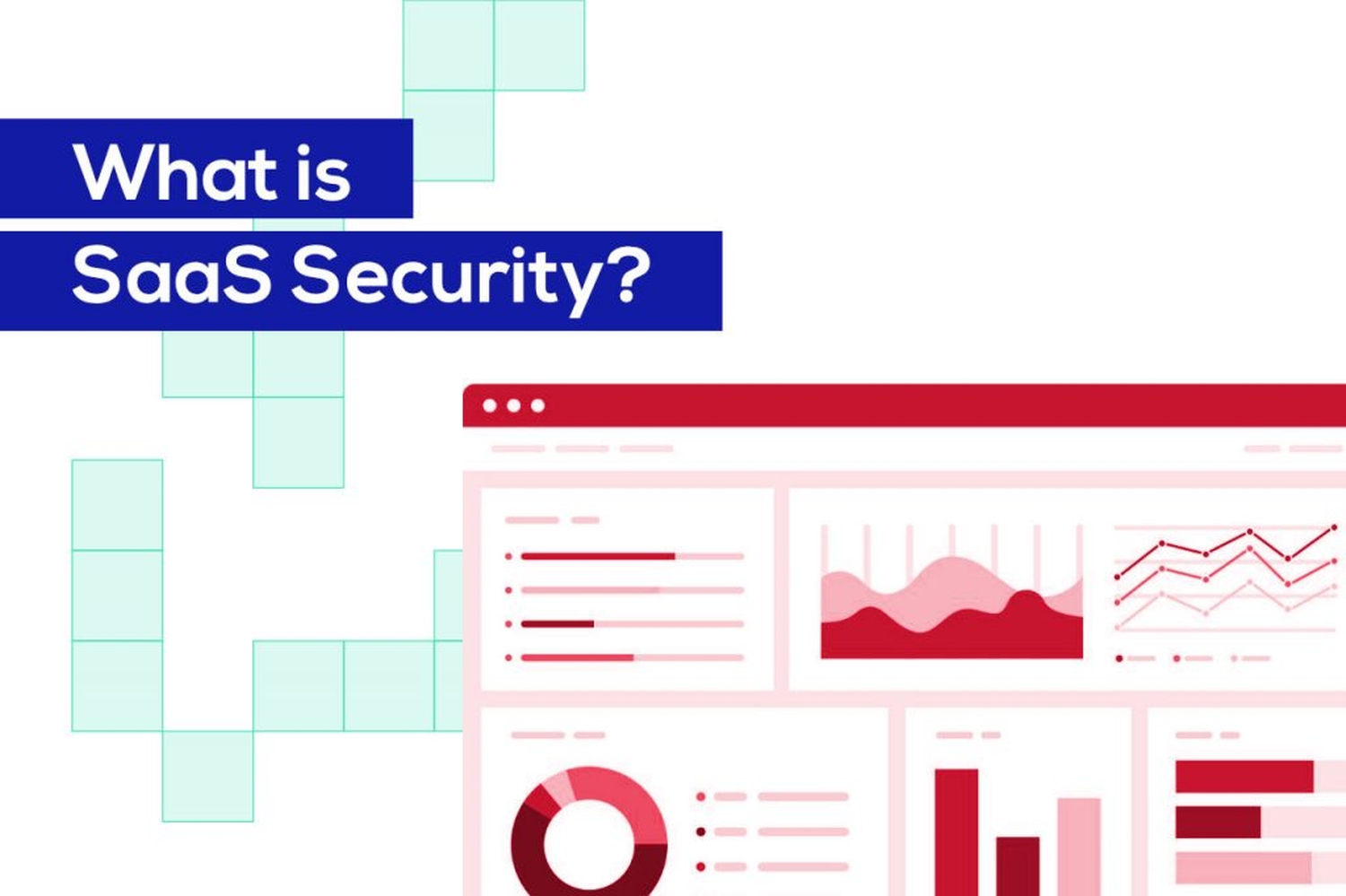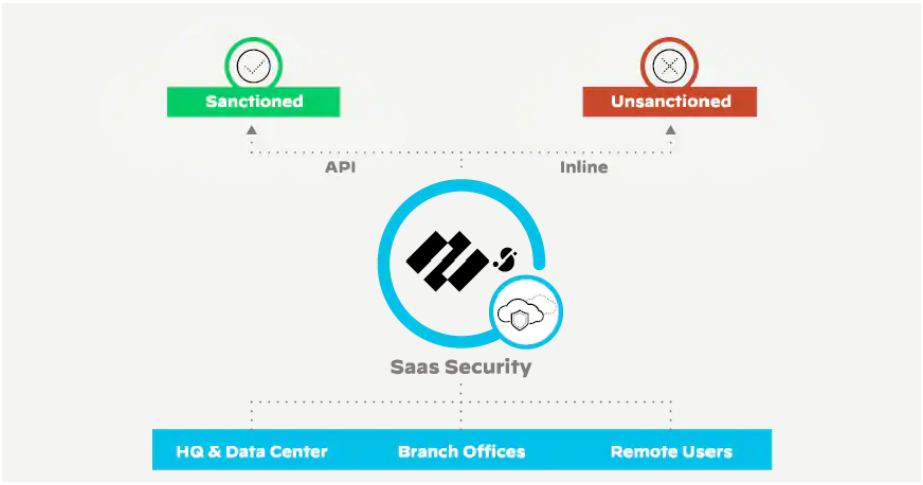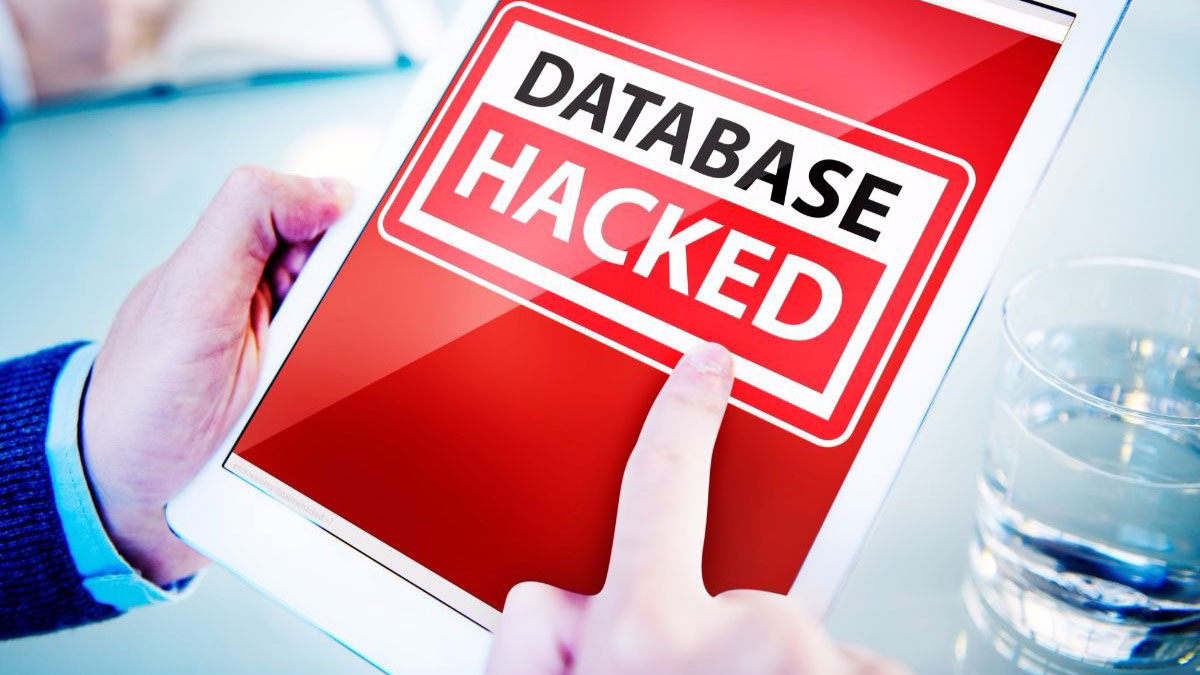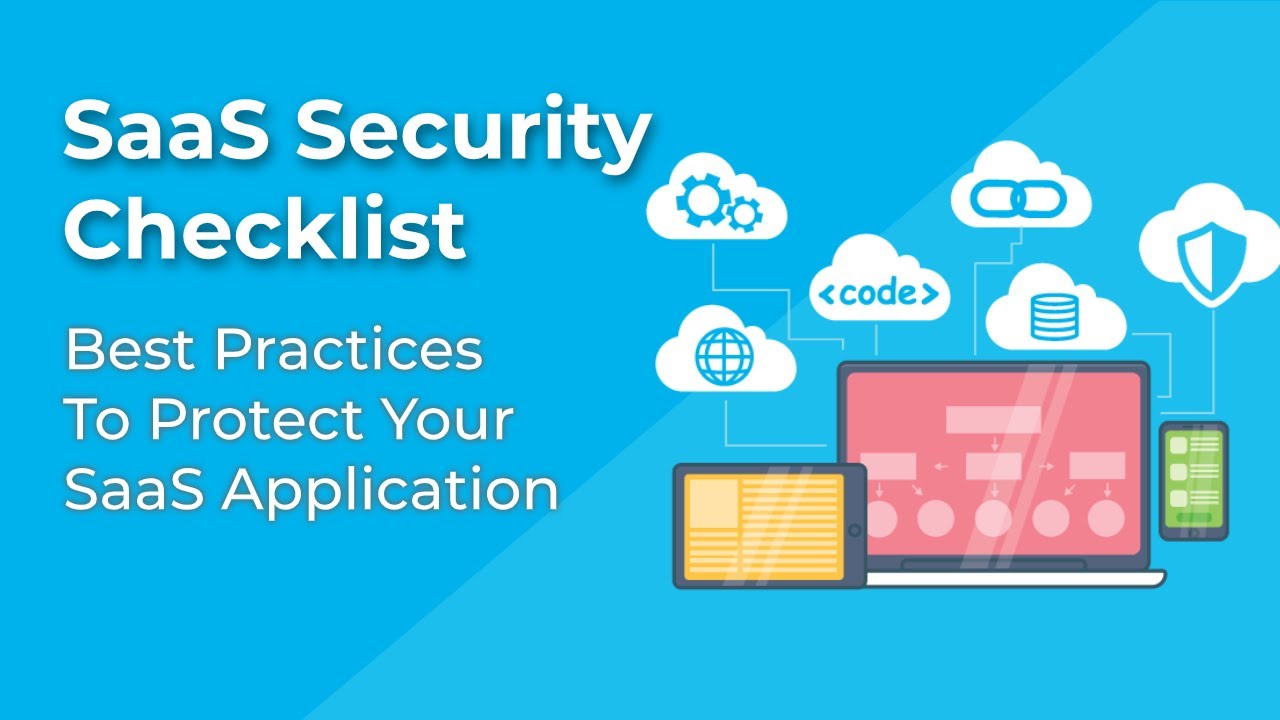Blog/Cloud Computing
What is SaaS Application Security? A beginner-friendly Guide

As businesses continue to move towards digitalisation, Software as a Service (SaaS) has become an increasingly popular choice for organisations looking to streamline their operations and improve efficiency. However, with the growing reliance on SaaS applications comes the challenge of ensuring their security. In addition, as cyber threats become more sophisticated, businesses face the daily challenge of protecting their sensitive data and intellectual property from malicious attacks.
This article will delve into the world of SaaS application security and explore the key challenges businesses face in securing their cloud-based software. We will also discuss why you need to prioritise SaaS security and the best practices for safeguarding your SaaS applications and mitigating the risk of cyber attacks. So whether you are an IT professional looking to strengthen your organisation's security or a business owner concerned about protecting your assets, this article is for you.
Let's get started!
Outline
- What is SaaS?
- Characteristics of SaaS
- What is SaaS Security?
- Data Security Challenges of SaaS Applications
- 7 SaaS Security Best Practices
- SaaS Security Solutions
- 4 Reasons Why You Need to Prioritise SaaS Security
What is SaaS?
Software as a Service, or SaaS, is a program delivery model in which a third-party provider hosts software apps and makes them accessible to customers online. Customers in this approach can use a web browser or a specific mobile app to access the software applications, and they can pay for the service via a subscription or usage-based pricing.
The main idea behind SaaS is that customers do not have to buy or manage their software or hardware due to its use of cloud computing services.
"The cloud" applies to distant web servers in different data centres that run application code and host databases.
Learn more about: What is Software as a Service in Cloud Computing?
Features of SaaS
1. Multi-tenancy model
The Multi-tenancy model is an essential architecture model for SaaS software applications that make it possible to provide services to numerous customers using one software deployment.
The model's name itself denotes what it is about. For example, each customer is called a "Tenant". Hence, multi-tenant implies multiple customers.
Each tenant can customise some parts of the application to their preference. However, these applications are often made so that each tenant's storage area is segregated by having a separate database. This leads to a different set of schemas inside a single database or the same database with discriminators.
2. High availability
High availability in SaaS means such applications or software must be globally accessible to people everywhere. This is because SaaS operates based on the multi-tenant feature, so it is expected to be available to numerous people.
As a result, the Software as a Service app should offer its users a high level of Service Level Agreement (SLA).
Also, applications need to be constantly accessible and must expose management and monitoring API to allow for continuous availability and health checks.
3. Security (Data and application)
Since SaaS offers services to numerous customers worldwide, there must be a provision to protect the service from attacks and unauthorised entry. Information for a particular tenant must be encrypted so other tenants cannot access it.
Hence, there is a need for the provision of a strong Key Management Framework or the capacity to interface with and incorporate external Key Management.
Regarding application security, all SaaS applications must be secured from OWASP/SAN-reported vulnerability.
SaaS applications should also have a solid identity and access management controls activated. The following additional features round up the security of the Software as a Service application:
Prevent buffer overflow assaults, open integration points with CASB, strong execution of duty separation, enhanced authentication methods like passcode lockout, multiple-factor verification, recognising illegal sessions, and preventing multi-session usage.
4. Single Sign on
Single sign-on is a login feature that allows users to verify their identity and use a system. This requires a simple integration with several identity management systems.
This crucial component is typically enabled by Software-as-a-Service apps using SAML or OpenID impersonations. In addition, since SaaS apps are multi-tenant, each tenant would want to authenticate using their own identity & access management system.
Essentially, all SaaS applications must have a single page where users can enter their login information and access all of the Software as a Service apps provided to them.
5. Subscription-based billing
Pricing for SaaS apps does not include complicated license costs, upgrade costs, etc. Rather, most Software as a Service (SaaS) applications are subscription-based, allowing users to purchase them as required and cancel their subscriptions whenever they want.
SaaS applications typically use a seat-based charging model, in which the quantity bought determines the price.
What is SaaS Security?

SaaS security refers to the measures and practices to protect Software as a Service (SaaS) applications from unauthorised or unsanctioned access, data breaches, and other cybersecurity risks. It involves implementing various safeguards to ensure the confidentiality, integrity, and availability of data stored and processed within the SaaS environment. The relationship between Saas and Cloud underlines why SaaS security is a critical component of cloud-based software.
For instance, imagine using a cloud-based project management tool like Trello or Asana to collaborate with your team. SaaS security would involve mechanisms that protect your sensitive project data from falling into the wrong hands or being tampered with.
This could include measures like secure authentication, data encryption in transit and at rest, regular software updates to patch vulnerabilities, and access controls to restrict user privileges.
Another example is a customer relationship management (CRM) system like Salesforce. With SaaS security, the focus would be on securing your valuable customer data stored in the application.
This might involve implementing multi-factor authentication to prevent unauthorised logins, employing data encryption to protect the information in transit and storage, and conducting regular security audits to identify and address potential vulnerabilities.
In essence, SaaS security is all about safeguarding the data, applications, and infrastructure provided by SaaS providers to ensure that users can trust the service and their information remains secure.
Data Security Challenges of SaaS Applications

Data security challenges are among the biggest concerns when using Software as a Service (SaaS) applications. While cloud-based software has advantages, it also presents unique risks that can compromise sensitive data's confidentiality, integrity, and availability. Here are some of the most significant data security challenges faced by SaaS applications.
- Data Breaches: SaaS applications are an attractive target for hackers since they contain vast amounts of valuable data. In 2023, statistics show over 3,000 data breaches in the first quarter alone, with over 8 billion records exposed globally. A high-profile example of a data breach involving a SaaS application was the 2021 Accellion breach, which affected several organisations, including the Reserve Bank of New Zealand and the Australian Securities and Investments Commission.
- Lack of Visibility and Control: One of the main challenges with SaaS applications is that they are often managed by third-party providers, meaning users have limited visibility and control over the security measures. This can lead to issues such as unpatched vulnerabilities and configuration errors, which attackers can exploit to gain unauthorised access to data.
- Insider Threats: While external attackers are a significant threat, insiders can also pose a risk to SaaS application security. This could include malicious employees or contractors who have access to sensitive data and can abuse their privileges. In 2023, a report by Accenture found that insider attacks have increased by 47% since 2021.
To mitigate these challenges, businesses must adopt a proactive approach to SaaS application security. This brings us to our next section, the measures and best practices for preventing these threats.
7 SaaS Security Best Practices

1. Data encryption
Data encryption safeguards data in storage (or at rest) and data being transferred between a cloud service and a client or between cloud apps. Transport Layer Security (TLS) is frequently used on the channels used to communicate with SaaS apps to secure data while it is in transit. Several SaaS companies additionally offer encryption features for data protection when it is at rest. This could come as a standard feature or need to be activated.
Additionally, it is essential to note that all sensitive data must always be encrypted to comply with government rules.
Some examples of these sensitive data include Personally Identifiable Information (PII), medical data, financial information, and many more.
Another alternative a business can take if their SaaS vendor does not offer some form of encryption is to improve their data security by using their encryption, such as deploying a CASB.
2. Use Identity and Access Management (IAM)
Using a role-based identity and access management solution can guarantee that end users do not have access to more resources than they need for their jobs. IAM solutions employ procedures and user access policies to control which files and programs a particular user can access.
Role-based permissions can also be applied to data by an organisation to ensure that end users only see the information they are permitted to see.
3. Improved Authentication
Deciding how users should be granted access to SaaS services can be challenging because cloud providers might handle authentication in various ways. The integration of identity providers that the customer can manage, such as Active Directory (AD) with Security Assertion Markup Language, OpenID Connect, and Open Authorisation, is supported by some (but not all) manufacturers. The same applies to the support of multi-factor authentication by different vendors.
Therefore, the security team must know the services used and the supported alternatives for each service to navigate the numerous accessible SaaS solutions. Due to this context, administrators can also select the best authentication technique (or ways) based on the organisation's requirements.
4. Employ Data Loss Prevention (DLP)
DLP software scans SaaS apps for sensitive data or detects sensitive data being sent out and prevents the transfer. This means that the DLP software finds sensitive data, stops it from being downloaded to personal devices, and hinders attempts by viruses or hackers to access and download data.
5. CASB tools
In cases when the SaaS provider does not offer a sufficient level of security, explore implementing a Cloud Access Security Broker (CASB) solution. Organisations can include controls that SaaS providers do not offer or do not natively support by using CASB.
Hence, investigate the options available to fix any security model flaws in the SaaS provider. You should also be aware of the various CASB deployment options so you can decide on the appropriate deployment configuration (such as API- or proxy-based) for the architecture of your company.
6. Vet provider's security
Research and assess potential SaaS providers (as with other vendors). For instance, you can verify that you are familiar with the service's intended purpose, the security model employed to deliver the service, and any optional security measures.
Additionally, you can use an audit to examine data encryption policies, personnel security procedures, cybersecurity protection, and data segregation policies.
7. Use SaaS Security Posture Management (SSPM)
SSPM makes certain that SaaS applications are correctly set up to prevent compromise. For instance, with an SSPM solution, you can automatically identify and address security risks in SaaS assets and prioritise risks and misconfigurations according to severity. In addition, this solution monitors SaaS applications to spot discrepancies between stated security policies and actual security posture.
SaaS Security Solutions
1. Secure Authentication
Implementing strong authentication methods is crucial to prevent unauthorised access to SaaS applications. This can incorporate multi-factor authentication (MFA), which asks users to give additional verification in addition to their password. For example, consider a scenario where a business relies on Microsoft 365 for email and collaboration. Users can add an extra layer of security to prevent unauthorised access by enabling MFA, which prompts users to enter a unique code generated on their mobile device in addition to their password.
2. Regular Software Updates
SaaS providers should regularly update their applications to address security vulnerabilities and patch any identified weaknesses. Updates often include bug fixes, security patches, and new features. For example, let's say a business relies on a cloud-based project management tool like Asana. The SaaS provider frequently releases software updates that address any security vulnerabilities identified in their system, ensuring that users are protected from potential exploits.
3. Regular Software Updates
SaaS vendors need to update their programs frequently to address vulnerabilities and fix any flaws that have been found. Updates frequently include bug fixes, security patches, and new features. For example, let's take the case of a company that uses Asana or another cloud-based project management service. To safeguard consumers from exploits, the SaaS provider constantly publishes software updates that fix any security flaws in their system.
4. Advanced malware prevention
Behavioural analytics and real-time threat intelligence are two examples of advanced malware prevention technologies that can help identify and stop zero-day attacks and harmful files that could be disseminated through cloud email and file-sharing services.
4 Reasons Why You Need to Prioritise SaaS Security
1. Build Trust and Reputation
Security incidents and information breaches can cause stakeholders' and partners' trust to decline. Hence, setting SaaS security as a top priority indicates your dedication to safeguarding confidential information and portrays your firm as reputable and trustworthy.
Also, by placing security first, you can increase client trust, uphold your reputation, and set yourself apart from rivals who might not place security first.
2. Collaboration
Internal teams that maintain SaaS services frequently lack the direction needed to secure them and instead tend to concentrate on functionality and business requirements. Continuous collaboration is necessary to strike a balance between business and security needs. Therefore, organisations need to devote more time and energy to identifying and mitigating security issues and treat SaaS with the same regard as bare metal, IaaS, PaaS, and endpoint security to assure consistency.
3. Communication
The business administrators who choose and oversee new SaaS solutions are rarely in contact with security teams. As a result, security teams will have difficulty understanding the company's scope of use and associated risks when these applications are fully operational because of the lack of team contact. Hence, SaaS security must be considered a top priority.
4. Maintain Business Continuity
SaaS apps are essential for many firms' daily operations. Any security breach or interruption to your SaaS applications can have serious repercussions, including downtime, financial losses, reputational harm, and potential legal repercussions. However, by prioritising SaaS security, you can minimise the likelihood and impact of security incidents, ensuring your critical business applications' uninterrupted availability and reliability.
Conclusion
SaaS applications have many advantages for businesses but pose security issues that must be adequately resolved. Hence, by implementing SaaS best practices such as data encryption, IAM, enhanced authentication, and continuous monitoring, organisations can strengthen the security of their SaaS applications and protect sensitive data from cyber threats. Compliance considerations and close collaboration with SaaS providers will also contribute to a robust security posture.
Related post
Recent Posts
Need help with a project?
© Wazobia Technologies 2025
Powered by:
